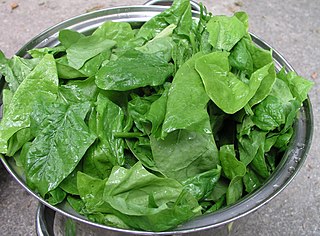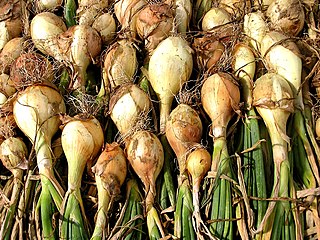
In physics, the kinetic energy of an object is the energy that it possesses due to its motion. It is defined as the work needed to accelerate a body of a given mass from rest to its stated velocity. Having gained this energy during its acceleration, the body maintains this kinetic energy unless its speed changes. The same amount of work is done by the body when decelerating from its current speed to a state of rest. Formally, a kinetic energy is any term in a system's Lagrangian which includes a derivative with respect to time.

In Newtonian mechanics, momentum is the product of the mass and velocity of an object. It is a vector quantity, possessing a magnitude and a direction. If m is an object's mass and v is its velocity, then the object's momentum p is :
In physics, power is the amount of energy transferred or converted per unit time. In the International System of Units, the unit of power is the watt, equal to one joule per second. In older works, power is sometimes called activity. Power is a scalar quantity.

In biochemistry, Michaelis–Menten kinetics is one of the best-known models of enzyme kinetics. It is named after German biochemist Leonor Michaelis and Canadian physician Maud Menten. The model takes the form of an equation describing the rate of enzymatic reactions, by relating reaction rate to , the concentration of a substrate S. Its formula is given by

Leaf vegetables, also called leafy greens, pot herbs, vegetable greens, or simply greens, are plant leaves eaten as a vegetable, sometimes accompanied by tender petioles and shoots. Leaf vegetables eaten raw in a salad can be called salad greens.
In linear algebra, an eigenvector or characteristic vector of a linear transformation is a nonzero vector that changes at most by a scalar factor when that linear transformation is applied to it. The corresponding eigenvalue, often denoted by , is the factor by which the eigenvector is scaled.

A capacitor is a device that stores electrical energy in an electric field by virtue of accumulating electric charges on two close surfaces insulated from each other. It is a passive electronic component with two terminals.

White onion or Allium cepa are a cultivar of dry onion which have a distinct light and mild flavour profile. Much like red onions, they have a high sugar and low sulphur content, and thus have a relatively short shelf life. White onions are used in a variety of dishes, such as those of Mexican and European origin. Their uses in dishes often relate to their mild nature, they are often included in dishes to provide a light, fresh and sour taste to dishes and are often added uncooked to dishes such as salads.

Pêra Rocha is a native Portuguese variety of pear. The earliest account of the Rocha variety dates from 1836, in the Sintra municipality. This variety was casually obtained from a seed, on Pedro António Rocha's farm. The variety derives its name from his family name. The 'Rocha' pear is produced in several places in Portugal. The production area is over 100 km² and there are about 9,450 producers.
Stemphylium globuliferum is a plant pathogen infecting alfalfa.

Stemphylium solani is a plant pathogen fungus in the phylum Ascomycota. It is the causal pathogen for grey leaf spot in tomatoes and leaf blight in alliums and cotton, though a wide range of additional species can serve as hosts. Symptoms include white spots on leaves and stems that progress to sunken red or purple lesions and finally leaf necrosis. S. solani reproduces and spreads through the formation of conidia on conidiophores. The teleomorph name of Stemphyllium is Pleospora though there are no naturally known occurrences of sexual reproduction. Resistant varieties of tomato and cotton are common, though the pathogen remains an important disease in Chinese garlic cultivation.

Stemphylium vesicarium is a plant pathogen infecting many plants including onion, garlic, asparagus, and pear.
Stemphylium bolickii is a plant pathogen infecting kalanchoes.
Stemphylium lycopersici is a plant pathogen infecting tomatoes, Capsicum and papayas.

Stemphylium sarciniforme is a plant pathogen infecting lentil, red clover and chickpea.

Pleosporaceae is a family of sac fungi. The taxonomic relationship of this family to associated genera is still not determined.
The enzyme cyanide hydratase (EC 4.2.1.66) catalyzes the chemical reaction

Pleospora is a genus of ascomycete fungi. This genus was originally described by Gottlob Ludwig Rabenhorst in 1857 and was revised by Wehmeyer and Muller. There are an estimated 63 species.
A sequence related amplified polymorphism (SRAP) is a molecular technique, developed by G. Li and C. F. Quiros in 2001, for detecting genetic variation in the open reading frames (ORFs) of genomes of plants and related organisms.











